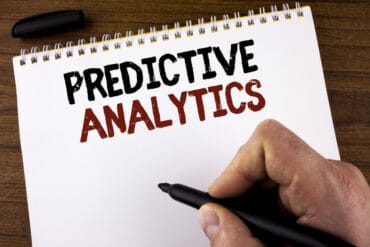
The advantage with digital twins is that they not only predict breakdowns in supply chains but also use AI to figure out a workaround.
Computer chips are delayed. Hard goods manufactured overseas are delayed. The food supply is disrupted. The lean inventory and just-in time shipping movement, heralded in recent years as the go-to business model, has essentially collapsed under the weight of global crises. But technology – in the form of digital twins – offers hope for a resolution.
“Just-in-time shipping is dead. Long live supply chains stress-tested with AI digital twins,” says Will Douglas Heaven, writing in MIT Technology Review. Heaven, who has been documenting the trials and tribulations of the global supply chain since the outbreak of the Covid crisis over the past two years, says the crisis has created the need for real-time representations of trading networks.
Approximately 17% of companies are looking at digital twin approaches to their supply chains, a 2020 survey by Grant Thornton and the National Association of Manufacturers found. “The concept of creating virtual models of supply chain networks may still be in the early days of development, but respondents believe this is an important area for future investment as part of their digitization and innovation efforts,” the survey’s authors said.
Adding AI-powered simulations to digital twins helps step up companies’ abilities to “get goods and services to customers on time,” says Heaven. “These tools not only predict disruptions down the line but suggest what to do about it. Desperate companies struggling with the collapse of just-in-time shipping are using them to find a crucial balance between efficiency and resilience.”
The possibilities extend up and down all manner of supply chains. Digital twins can play a role in “helping farmers grow better, as well,” says Daniel Newman, writing in Futurum. “For instance, using a digital twin of a farmer’s agricultural portfolio, data can help track things like soil quality, harvest rate, waste rate, growth rate, weather patterns, etc. This all helps farmers set more accurate crop yields, which in turn optimizes growth and/or prevents waste.”
The advantage with digital twins is that they not only predict breakdowns in supply chains but also “use AI to figure out a workaround,” Heaven explains. Digital twins are being employed to mirror real-world objects—”from ports to products—and the processes they are a part of. The availability of large amounts of real-time data and computing power means that more complex processes can be simulated for the first time, including the chaos of global supply chains that often rely on numerous vendors and transportation networks.”
Available data includes “logistical information about the company and its suppliers, accounting for inputs such as inventory and shipping data,” Heaven adds. “Then there’s data on consumer behavior, based on market analysis and financial projections. And data about the wider world, such as geopolitical and socioeconomic trends.”
Early results, as documented by analysts at Boston Consulting Group (BCG), find a range of benefits, “including sustainable inventory reductions of up to 5%, CapEx reductions of up to 10%, through better resource planning and investment decisions, and EBITDA improvements of one to three percentage points. They have also achieved higher throughput and enhanced service levels.”
To put digital twin-enhanced supply chains in place, the BCG team states that the business needs to be in charge of the effort, to identify the key processes and pain points that can be identified and resolved before they affect the physical world. However, a modern data and analytics platform that cuts across legacy silos needs to be in place to support the twin — which “introduces technical capabilities that are new to many companies. Companies typically sit on huge amounts of data. However, such data is spread across multiple source systems, encapsulated in legacy IT solutions, and not curated. As a result, it is extremely difficult and costly for companies to extract value from it. With the appropriate platform and governance in place, a company can implement the digital twin following an agile approach: quickly develop and deploy a minimal viable product to accelerate value creation, and then refine the product over time to make it more robust and increase its functionality.”
In an era of great uncertainty when it comes to moving goods across fragile global networks, the ability to simulate network interactions will help provide more certainty. The transparency and predictive capabilities provided by digital twins will help untangle current and future supply chain disruptions.





























